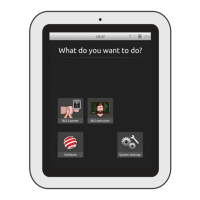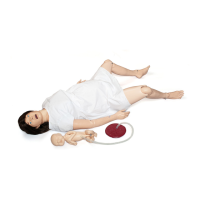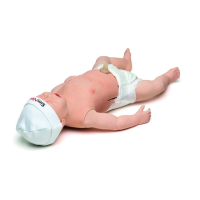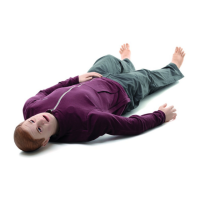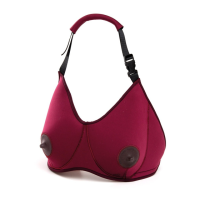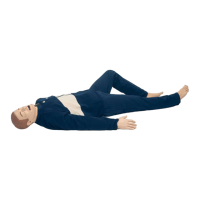6
Introduction
SimJunior Simulator
SimJunior facilitates interactive training of life-saving skills and responds
to clinical intervention, instructor control, and pre-programmed
.tneitap a fo tnemtaert dna sisongaid fo ecitcarp evitceffe rof soiranecs
With spontaneous breathing, airway control, voice, sounds, ECG, and
.rotalumis cirtaidep lanoitcnuf ylluf a si roinuJmiS ,serutaef lacinilc rehto
SimJunior allows observation and recognition of most vital signs, which
enables the instructor to assess the student’s skills based on a realistic
clinical situation.
SimJunior Features
– Realistic airway for simulation of difficult airway management, oral,
and nasal intubation.
– Observable breathing.
– Cardiac features, including defibrillation and cardioversion.
– Eyes with interchangeable pupils (normal, dilated, or constricted).
– Convulsions to simulate seizures.
– Chest compressions.
– Vascular access.
– No
rmal and abnormal hear
t, breath, and bowel sounds.
– Automatic Simulation Control based on pre-programmed and
validated patient scenarios.
Simulations can run autonomously using scenarios on the SimPad
or Instructor Application (PC). The development of the patient’s
condition is pre-programed and automatically responds according
to the participant interventions.
Overall Dimensions
Length / Width (manikin only): 48 in x 9.84 in (120 cm x 42.5 cm)
Weight (manikin only): 25 lbs (11.36 kg)
SimJunior Clothing
SimJunior comes with custom designed clothing with Velcro openings
for easy removal. Washing instructions are found on the clothing label.
− Shirt
− Shorts
− Boxer Shorts
General Clinical Features
Airway Features
The airway is anatomically correct to the trachea. The airway can be
manipulated by:
− Head tilt/chin lift.
− Jaw thrust with articulated jaw.
− Cricoid pressure and manipulation.
− Suctioning (oral and nasopharyngeal)
The manikin may be ventilated by normal and emergency methods;
− Bag-mask ventilation
− Orotracheal intubation
− Nasotracheal intubation
Prior to using airway devices, lubricate with Laerdal Airway Lubricant.
The following equipment or methods are suitable to secure the
manikin’s airway:
− Laryngeal mask airways (size #2.5).
− Endotracheal tube intubation (size ID 4.5 cuffed, 5.5 uncuffed).
Use of a malleable stylet is recommended. Make sure it does not
extend beyond the ET tube.
The following manikin conditions indicate incorrect tube placement:
− Right main stem intubation – unilateral chest rise.
− Stomach distention.
− Lack of chest sounds (see Breathing section).
Manikin features may be configured to present various airwa
y
scenarios:
−
Tongue edema - normal, medium, maximum levels.
− Lungs open or closed.
Breathing Features
SimJunior can simulate spontaneous breathing with visible chest rise
and fall and variable breathing rates. The breathing is generated by an
enclosed air compressor in the manikin’s right thigh.
− Bilateral chest rise and fall with spontaneous breathing.
− Unilateral chest rise and fall with right mainstem intubation during
ventilations.
− Unilateral and bilateral lung sounds.
− Normal and abnormal breath sounds.
− Variable respiration rate (0-60 breaths per minute).
− Anterior auscultation sites (4).
The left lung and right lung can be closed independently or together
to create a partial or complete airway obstruction. The SimJunior
manikin can also be used with assisted ventilations.
Note: Lungs are not intended for use with PEEP-valves.
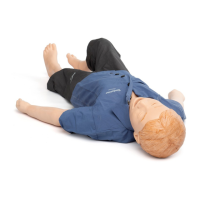
